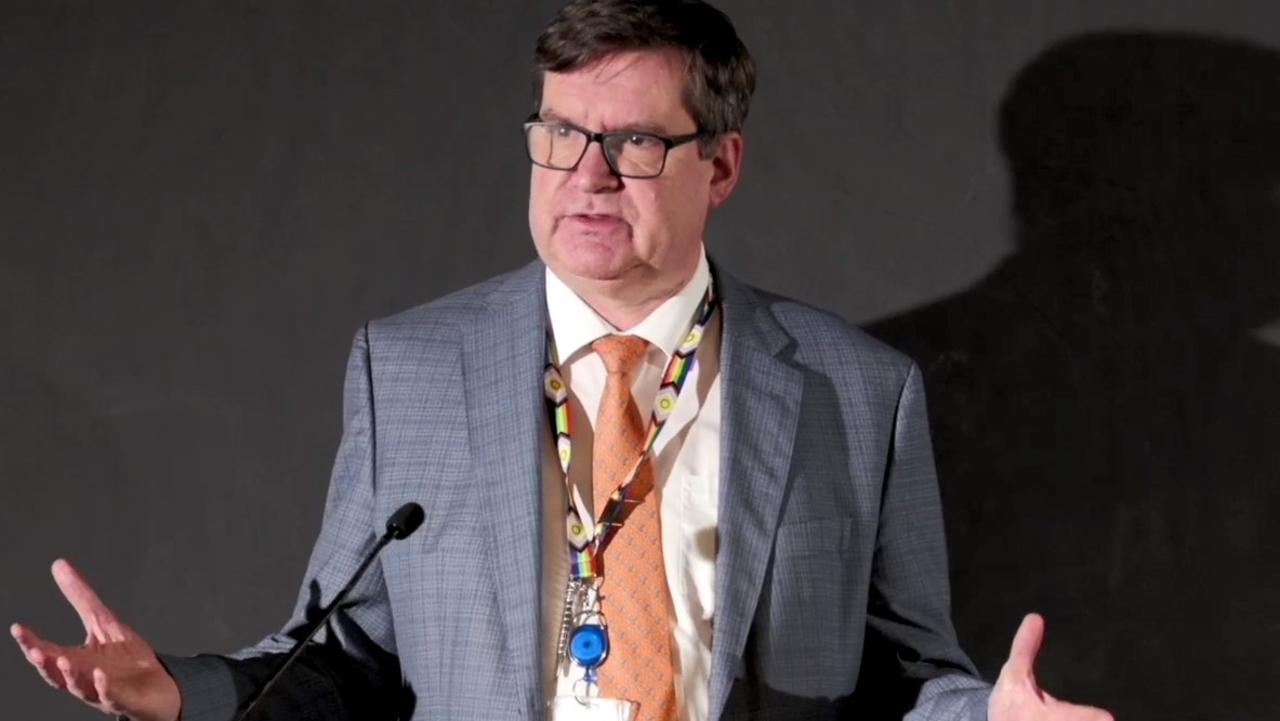Why Victoria’s vaccine uptake is slow compared to New South Wales
Victoria’s vaccine rollout has been slow compared to other states, but health officials say there’s a perfectly good reason why.

Coronavirus
Don't miss out on the headlines from Coronavirus. Followed categories will be added to My News.
Victoria only used 30 per cent of its allocated COVID-19 vaccinations, compared to New South Wales which administered 74 per cent in the first week of the national vaccine program rollout.
And in the second week, Victoria only used 16 per cent.
Despite the poor strike rate, health officials only had good things to say about Victoria’s vaccine program — with everything tracking along as planned.
AMA Victoria chairman of council Dr Mukesh Haikerwal said the state’s health department had come a long way since lockdown.
“Coming out of lockdown and the spike we had, there’s been a significant learning in the department and this has been a much more positive, engaging and proactive process,” he said.
“They have learned a lot from other statekholders, communities, local governments and of course the people.”
Dr Haikerwal, also a general practitioner, will administer the AstraZeneca vaccine at his Altona North Medical Group from Monday week.
He said many, hardworking people were helping Victoria reach its target of administering 40,000 vaccines in the program’s first month.
“The goodwill is there across the sector and the people leading this charge have great confidence in making this a great success,” he said.
“The key thing will be getting into the next phase (of the vaccination program) and once you get beyond the 80 and 90-year olds, the population peaks. We have to get more and more people vaccinated and have to pivot from one-on-one vaccinations to mass-vaccine type set ups.”
Dr Haikerwal said one reason behind Victoria’s slow vaccine uptake was due to vaccine allocation delays, largely due to overseas influences like Europe’s Pfizer factory closing.
COVID Live founder Anthony Macali, who uses the independent statistics site to report daily vaccine allocation and dose figures, said Victoria’s uptake lagged in the first week.
“Compared to other states, Victoria was a bit slower but we can clearly see that is ramping up,” he said.
Mr Macali said Victoria was more transparent with its vaccine data than other states.
“They have been reporting data every day and in week one, they were doing about 600 to 800 vaccines a day. Now it’s seen a few 2000 days and yesterday it was in the thousands.”
“Victoria reports on (the number of doses) daily whereas New South Wales has refused to report on it. Usually the information comes out of a press conference when a reporter asks about it, but they haven’t had a lot recently.”
LOUSY WEEKEND STATS
A staggeringly low number of Victorians were vaccinated for COVID-19 on the weekend.
Only 727 and 844 received the Pfizer jab statewide last Saturday and Sunday respectively.
In the first week Victoria had only administered 30 per cent of its allocated vaccine doses (3,862 of 12,870), compared to New South Wales which administered 74 per cent of its allocation (10,339 of 14,040).
As the national vaccine program enters its third week, the federal government has not released a state allocation breakdown for week two.
However, federal health Minister Greg Hunt revealed last Tuesday a further 300,000 doses of both Pfizer and AstraZeneca would be distributed in the next 10 days Australia-wide — including 76,000 in Victoria and 86,000 in New South Wales.
COVID Live data, using Mr Hunt’s figures, found Victoria only used 16 per cent of its allocation (14,422 of its 88,870) and New South Wales had only used 22 per cent (21,763 of 100,040) in week two.

In comparison, the Northern Territory used 42 per cent of its allocation (2066 of its 4870).
Mr Macali said Australia needed a universal approach to reporting vaccine data.
At the moment, the federal government provides a weekly update on the number doses — and sometimes each state’s allocation — and aged care doses.
The states are responsible, but not obliged, to reports its own allocation and dose data.
“Data transparency has a long way to go — we haven’t even got the allocation confirmed for week two and New South Wales doesn’t even report a daily figure,” Mr Macali said.
“It’ll be curious to see whether information will be released on the number of second doses administered.”




